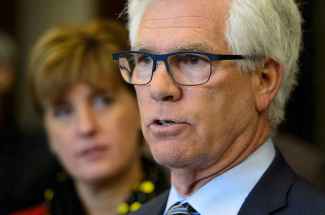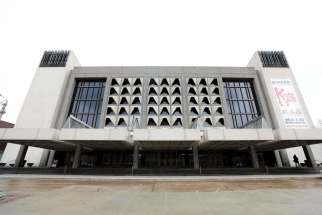Tourism in search of ‘authentic’ Indigenous experience
Read this article for free:
or
Already have an account? Log in here »
To continue reading, please subscribe:
Monthly Digital Subscription
$0 for the first 4 weeks*
- Enjoy unlimited reading on winnipegfreepress.com
- Read the E-Edition, our digital replica newspaper
- Access News Break, our award-winning app
- Play interactive puzzles
*No charge for 4 weeks then price increases to the regular rate of $19.00 plus GST every four weeks. Offer available to new and qualified returning subscribers only. Cancel any time.
Monthly Digital Subscription
$4.75/week*
- Enjoy unlimited reading on winnipegfreepress.com
- Read the E-Edition, our digital replica newspaper
- Access News Break, our award-winning app
- Play interactive puzzles
*Billed as $19 plus GST every four weeks. Cancel any time.
To continue reading, please subscribe:
Add Free Press access to your Brandon Sun subscription for only an additional
$1 for the first 4 weeks*
*Your next subscription payment will increase by $1.00 and you will be charged $16.99 plus GST for four weeks. After four weeks, your payment will increase to $23.99 plus GST every four weeks.
Read unlimited articles for free today:
or
Already have an account? Log in here »
Hey there, time traveller!
This article was published 01/05/2019 (2418 days ago), so information in it may no longer be current.
Manitoba is said to be well-positioned to respond to a rising global appetite for Indigenous experiences. The key is that international tourists want their experience to be authentic.
How authentic do they want it? For example, would their quest for authenticity prompt them to visit a fly-in northern First Nation and sleep in an overcrowded 600-square-foot house infected by mould, and boil their water because the community remains under a long-term advisory? Probably not.
At a recent news conference, Travel Manitoba noted national studies have found Indigenous tourism is outpacing tourism activity overall, and one out of three international tourists to Canada wants to take part in genuine Indigenous experiences.

Manitoba, it appears, is situated well to respond to this global interest because the province is home to 63 First Nations, with one in seven Indigenous citizens in Canada living in Manitoba.
But when tourists say they want bona fide Indigenous experiences, you can bet your bottom tourism dollar they don’t want to line up with Winnipeg’s Indigenous street people at a soup kitchen, or tour Manitoba penal institutions to see the 70 per cent of inmates who are Indigenous.
What tourists want, according to economically focused stories from successful Indigenous businesses, are experiences with Indigenous cultures and traditions immersed in the land. They want presentations that include art, music, dancing and tours of traditional territories.
There’s much to be said for, and apparently much money to be made from, presenting a positive face of Indigenous experiences in Manitoba. But at the same time, there are also dangers to pretending Indigenous life in Manitoba is nothing more then powwows and fires in teepees.
Indigenous life is complex, and so must be experiences with these communities. There’s much more to Indigenous lives than sanitized, warm and fuzzy versions palatable to tourists and suitable for postcards. Tourists won’t be inclined to read the multi-volume Truth and Reconciliation Report, of course, but it’s important that people who live in Manitoba don’t ignore the fact that oppression and cultural genocide have happened here and, as evidenced by a host of social and economic problems, are still happening in many communities.
Indigenous culture is not something to be sold in a tourist shop for a quick buck. Songs and objects such as dream catchers should be treated with respect for their deep spiritual and sacred significance. Hunting and fishing in Indigenous communities can provide much-needed financial investment if the excursions don’t just take things from the community but also return gifts back to the community.
It’s important that people who live in Manitoba don’t ignore the fact that oppression and cultural genocide have happened here.
Powwows can’t be reduced to simply watching dancing; the experience should also be about understanding what the dancers are expressing, and understanding the complexity of their lives when the traditional regalia comes off.
Such concerns are not intended to dampen the exciting potential that international tourism presents to Indigenous businesses. Manitoba currently has 28 Indigenous-owned tourism businesses worth $61 million annually; according to Growth, Enterprise and Trade Minister Blaine Pedersen, the goal is to increase the number to 38 businesses worth $71 million by 2022.
Done respectfully, Indigenous tourism experiences can educate people about Indigenous culture and traditions.
Marketing Indigenous experiences in Manitoba should proceed, but with caution, and with Indigenous leadership driving the effort. This province is only now beginning to change stereotypes and actions that exploit Indigenous communities; let’s not take backward steps for the sake of a few bucks from tourists.












